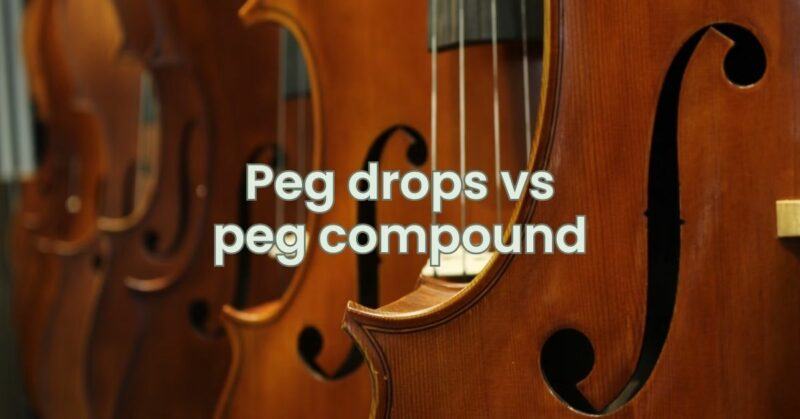Musical instruments hold a special place in the hearts of musicians, and maintaining them is a top priority. When it comes to string instruments, ensuring precise and stable tuning is essential for creating beautiful music. This leads us to the debate between two popular solutions for maintaining tuning pegs: peg drops and peg compounds. In this article, we’ll delve into the characteristics of both options and help you make an informed decision about which one suits your instrument and preferences.
Peg Drops: The Precision Solution
Peg drops, also known as peg lubricant or peg oil, are specially formulated liquids designed to lubricate and alleviate sticking in tuning pegs. Typically made from a blend of mineral oils, peg drops offer several advantages:
- Precise Application: Peg drops usually come with a dropper tip, allowing you to apply a controlled amount of lubricant directly to the pegs’ contact points. This precision helps avoid over-lubrication, which could lead to pegs slipping.
- Long-Lasting Lubrication: Peg drops often provide a longer-lasting lubrication effect compared to traditional peg compounds. A single application can keep your pegs turning smoothly for an extended period.
- Less Mess: Peg drops are less likely to create a mess on your instrument, as they are applied directly to the pegs without needing to be rubbed or spread.
Peg Compound: A Classic Approach
Peg compounds, often called peg paste or peg compound paste, have been used for generations to maintain tuning pegs. These compounds are typically a mixture of various materials, such as soap, wax, and other additives. Here are some of their notable features:
- Ease of Application: Applying peg compound involves rubbing a small amount onto the pegs and then turning them to distribute the compound evenly. This process can be satisfying and allows for a tactile connection with the instrument.
- Historical Significance: Peg compounds have stood the test of time and have been trusted by musicians for centuries. Their historical significance adds a sense of tradition to the maintenance routine.
- Versatility: Some peg compounds can serve multiple purposes, such as not only lubricating the pegs but also preventing them from slipping due to their adhesive properties.
Choosing the Right Solution
Ultimately, the choice between peg drops and peg compound depends on your personal preferences, the specific requirements of your instrument, and the level of maintenance you’re comfortable with. Here are some factors to consider:
- Instrument Type: Different instruments may respond better to one solution over the other. For instance, peg drops might be more suitable for delicate instruments like violins, where precise tuning is crucial, while peg compounds could work well for instruments that require additional grip to prevent pegs from slipping.
- Maintenance Frequency: If you’re looking for a low-maintenance option, peg drops might be preferable due to their longer-lasting effects. If you enjoy hands-on maintenance and value the tactile experience, peg compounds could be more appealing.
- Personal Preference: Some musicians prefer the familiarity of traditional peg compounds, while others appreciate the modern precision of peg drops. Experimenting with both options could help you discover your preferred maintenance routine.
Conclusion
Whether you opt for the precise application of peg drops or the classic approach of peg compounds, the key takeaway is that regular maintenance of your instrument’s tuning pegs is essential for optimal performance. Both solutions have their unique benefits, and the choice ultimately comes down to what aligns best with your instrument’s needs and your personal preferences. Whichever route you choose, remember that a well-maintained instrument is a happy instrument, ready to create beautiful melodies that resonate with your musical journey.


